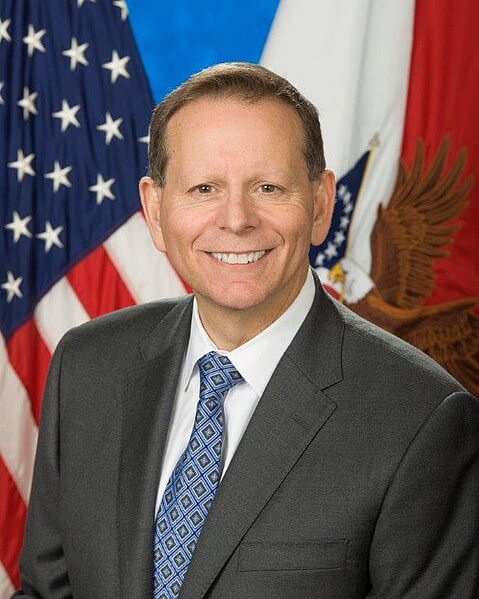Managing Veterans Benefits Administration Performance & Results Webcast: Quarter 2 of Fiscal Year 2019

On April 25, 2019 at 2pm, Dr. Paul Lawrence (Under Secretary for Benefits) hosted a webcast to discuss the overall progress of the Veterans Benefits Administration during quarter two of fiscal year 2019 (i.e. January 2019 – March 2019). He was joined by Dave McLenachen, Executive Director of the Appeals Management Office and Will Streitberger, Director, Vocational Rehabilitation and Employment Service. During the webcast, Dr. Lawrence and his colleagues addressed performance across VBA’s eight lines of business, financial metrics, accomplishments, challenges, and collaborations.
VBA Results: Quarter 2 of Fiscal Year 2019
At the beginning of the webcast, Dr. Lawrence reiterated VBA’s top three priorities for the remainder of fiscal year 2019, including: (1) providing benefits with excellent customer service, (2) fiscal stewardship, and (3) strong collaboration. Overall, VBA focuses on providing a variety of benefits and services to servicemembers, veterans, and their families.
Compensation
This quarter, VBA completed review of nearly 264,000 claims, each within an average of 127.8 days. Dr. Lawrence noted that this was slightly below the completion target for quarter two, likely due to the implementation of the Appeals Modernization Act (AMA). Specifically, the implementation of AMA resulted in unexpected technology issues that slowed the processing of claims. VBA is working closely with the Office of Information and Technology to address all technology defects. Additionally, VBA was dealing with slightly more issues per claim than in quarter one (i.e. an average of 5.5 issues per claim). Nonetheless, VBA successfully served 4.8 million veterans and paid $21.7 billion in compensation benefits during quarter two.
Appeals
In quarter two of fiscal year 2019, VA fully implemented AMA, meaning veterans and other claimants who disagree with VA decisions made on or after February 19, 2019 will have to appeal under the new system. As of February 2019, VBA also stopped accepting Rapid Appeals Modernization Program (RAMP) election forms; however, veterans in the legacy appeals system may still opt in to the modernized process at certain decision points. During quarter two, VBA reduced the legacy inventory to 267,000 pending appeals. While this is slightly higher than the target of 264,000 pending legacy appeals, VBA remains committed to eliminating all non-remand legacy appeals in fiscal year 2020. Again, Dr. Lawrence noted that the number of pending appeals is higher than projected due to contractor technology glitches in the system used to receive and process mail – an issue which has since been resolved.
Pension & Fiduciary
VBA provided pension benefits to 251,000 veterans in quarter two of fiscal year 2019. During the webcast, Dr. Lawrence divided VBA’s progress into two parts: Veterans’ Pension and Survivors’ Pension. He noted that claims processing for Veterans’ Pension was slightly below the target goal, but VBA is currently identifying opportunities to streamline processes to close the gap. However, VBA completed each claim in an average of 115.1 days, which is 10 days better than its 125-day target. In regards to Survivors’ Pension, VBA was also slightly below target, completing roughly 15,300 claims. Again, VBA is working to streamline processes to meet its target.
VA’s fiduciary program serves to appoint fiduciaries for beneficiaries who are unable to manage their benefits as a result of injury, disease, or age. In quarter two, about 190,000 beneficiaries were served, marking an increase from quarter one. Furthermore, VBA conducted 24,000 field examinations to include reviews of fiduciary-beneficiary relationships and wellness checks. This exceeded VBA’s target goal of 23,600 visits.
Insurance
VA’s Insurance Program is currently the 14th largest insurance program in the United States, providing coverage under 10 lines of life insurance protection for servicemembers, veterans, and their families. Surveys of insurance beneficiaries indicated a 94 percent rate of customer satisfaction for quarter two. VBA was also successful in locating 378 hard to find beneficiaries upon a veteran’s passing and paid $1.7 million in death claim benefits. These benefits were provided in a timely and accurate manner as disbursements were processed in an average of 3.7 days.
Education
VBA’s Education Program advances the education and skills of veterans, servicemembers, family members, and survivors through a number of different programs, including the post-9/11 GI Bill. In quarter two of fiscal year 2019, VBA paid $3 billion to 488,000 veterans or their dependents. VBA also processed original applications for education benefits in an average of 21.8 days, lower than its 28-day target, with a 97.86 percent accuracy rate. In further regards to the post-9/11 GI Bill, VBA restored 929 months of GI Bill entitlement to veterans affected by school closures in quarter two.
Vocational Rehabilitation and Employment
The purpose of VBA’s Vocational Rehabilitation and Employment (VR&E) program is to get veterans to positive outcomes, including employment, independent living, or continuing with school. VBA exceeded its target of 3,886 veterans after helping a total of 4,046 veterans reach positive outcomes in quarter two of fiscal year 2019. So far, VBA is on track with its goal to hire 169 counselors, having hired 100 total counselors to date. During quarter two, VBA also rolled out telecounesling: an option for veterans to virtually connect with VR&E counselors. This has contributed to an increase in the number of appointments, now averaging over 1,000 per month.
Home Loans
Home loans help servicemembers and veterans obtain, retain, and re-finance their homes with typically no down payment, no mortgage insurance, limited closing costs, no pre-payment penalty, and foreclosure assistance. This quarter, VBA guaranteed nearly $32 billion on new home loans and worked with 31,432 veterans to avoid foreclosure. VBA’s goal is to process 95 percent of home loan certificates of eligibility within five days. In quarter two, 99 percent were processed in the five-day period, with almost 50 percent completed in just one day. Specially adapted housing assistive technology grants totaling $799,753 were awarded in quarter two as well. Grants include artificial intelligence, a disability-adapted bathroom module, and voice commands to interface with a home environment.
Office of Transition and Economic Development
The Office of Transition and Economic Development provides servicemembers and veterans opportunities for economic advancement from military service through civilian life by connecting them to VA benefits, economic information, partners, services, and tools they need. Satisfaction with transition assistance performance reached a 96.3 percent rate in quarter two. VBA continues to promote the Office of Transition and Economic Development as it released and distributed its “military to civilian transition” publication in January 2019.
Quarter 2 Engagement with Veterans and Stakeholders
Dr. Lawrence noted traveling across the country to visit with many veterans, Veterans Service Organizations (VSOs), and VA employees throughout quarter two. This engagement with veterans and stakeholder reflects one of VBA’s top priorities for fiscal year 2019. Different engagement activities this quarter included participating in a “Point in Time Count” in Tampa, Florida to determine the number of homeless veterans in the area and develop ways to improve living situations. Furthermore, VBA completed nearly 2,000 outreach events in quarter two. VBA overseas military service coordinators also had over 5,000 interactions with servicemembers and veterans in Europe and Japan. Importantly, VBA remained open during the 35-day government shut down from December 22, 2018 to January 25, 2019.
Appeals Modernization Act Update – Dave McLenachen
Dave McLenachen provided an update on the Appeals Modernization Act, which was officially implemented on February 19, 2019. He highlighted that this transition has been successful, but with less than 6,000 supplemental and higher-level review claims filed thus far, it is too early to draw any final conclusions about AMA’s progress. VBA has consolidated higher-level review claims at the new Decision Review Operation Centers at St. Petersburg and Seattle Regional Offices, which are now fully operational. However, higher-level review filings are lower than expected, comprising only 21 percent of established claims under AMA. The average number of days to complete higher-level review and supplemental claims has been 28 days and 25 days, respectively. McLenachen also noted that the implementation of such significant legislation presents a number of internal and external challenges, but VBA will continue to work with veterans and representatives to manage them.
VR&E Update – Will Streitberger
Director of VR&E Service, Will Streitberger, is responsible for overseeing the delivery of services to veterans with service-connected conditions and servicemembers in the process of transitioning from the military to prepare for, and maintain suitable careers, or obtain independent living. He announced that during quarter two of fiscal year 2019, VR&E embarked on a comprehensive, multiyear modernization effort to improve customer service by streamlining processes and modernizing systems. Part of this modernization effort involves the implementation of telecounesling using VA Video Connect – a new and innovative way to provide servicemembers and veterans greater access to benefits. Telecounseling offers more choice and flexibility in communicating with counselors and employment coordinators. Streitberger noted that it is not only simple to use, but also saves time and money. While telecounesling presents another service delivery option, Streitberger emphasized that it will never take the place of a servicemember or veteran’s choice to meet in person with his or her counselor.
Questions from VSOs
Towards the end of the webcast, Dr. Lawrence answered two questions coming from VSOs, relating to transition assistance performance and Blue Water Navy veterans.
Transition Assistance Performance
VSOs indicated that transitioning servicemembers feel that the information they are receiving through VBA’s transition assistance service is valuable, but there is too much presented in a short period of time, making it impossible to absorb all of it. As such, VSOs wanted to know more about what steps VBA is taking to improve the delivery of knowledge of VA benefits and services to transitioning servicemembers. In response, Dr. Lawrence mentioned that condensed classes are now becoming available to servicemembers throughout their military careers, as opposed to only offering this information during their transition from services. These classes are available within each branch of service, and serve to provide an early opportunity to learn about VA benefits. As of now, there are seven classes on topics that include education benefits, home loan guaranty, community integration resources, etc. However, Dr. Lawrence stated that by summer of 2020, there will be a total of 12 classes available.
Blue Water Navy Veterans
VSOs also requested an update in regards to Blue Water Navy veterans and when VA will begin processing Blue Water Navy veterans’ claims for benefits. Dr. Lawrence replied to this question stating that VBA is currently in the process of analyzing policies and developing procedures, identifying affected populations and their eligibility to benefits and healthcare, and developing a robust outreach and communications plan. He noted that much of this is still in progress, but VBA will keep the veterans community informed of all updates.
Progress and Results Summary
Towards the end of the webcast, Dr. Lawrence concluded with an overview of VBA’s progress and results for quarter two of fiscal year 2019. Specifically, he stated that the overall performance of VBA’s eight lines of business was generally positive despite some challenges that are being addressed. He also noted that VBA’s budget for fiscal year 2019 remains on target, having spent roughly 52 percent of total funds by the end of quarter two.
About the Author
Share this Post
